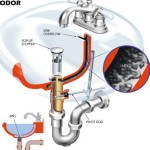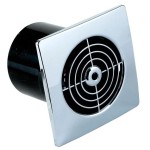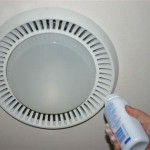How to Tighten a Tap on a Bathroom Sink
A leaky bathroom sink tap can be a nuisance, wasting water and creating an unpleasant dripping sound. Fortunately, tightening a loose tap is a relatively simple task that can be accomplished with basic tools and a little know-how. This article will guide you through the process of tightening a tap on a bathroom sink, step by step, ensuring you can tackle this common plumbing issue with confidence.
1. Gather the Necessary Tools
Before embarking on any plumbing project, it is essential to have the right tools at your disposal. For tightening a bathroom sink tap, you will need:
- Adjustable wrench: This versatile tool is used to grip and turn nuts and bolts of various sizes.
- Channel lock pliers: These pliers are useful for gripping and turning objects with irregular shapes, such as tap handles.
- Screwdriver: A Phillips-head screwdriver is usually required to remove the tap handle.
- Teflon tape: Also known as plumber's tape, this tape is used to seal the threads of the tap to prevent leaks.
- Rag or cloth: This will be used to clean up any excess water or debris.
2. Turn Off the Water Supply
The first step in tightening a tap is to ensure that the water supply to the sink is turned off. Locate the shut-off valve for the sink, which is usually located under the sink or on the wall behind it. Turn the valve clockwise until it is fully closed. To confirm that the water supply is shut off, turn on the tap and check for any water flow.
3. Remove the Tap Handle
Once the water supply is shut off, you can remove the tap handle. Depending on the tap's design, this may involve unscrewing the handle or using a screwdriver to remove a screw that secures the handle to the tap stem. If the tap handle is difficult to remove, you can use a pair of channel lock pliers to grip the handle firmly and twist it counterclockwise. Be careful not to overtighten the pliers, as this could damage the handle.
4. Tighten the Tap Stem
With the tap handle removed, you can now access the tap stem, which is the vertical rod that connects the handle to the valve. To tighten the tap stem, use an adjustable wrench to hold the tap body and turn the stem clockwise until it is tight. You should feel the stem becoming tighter and the tap should stop moving. If the stem is extremely loose, it may require replacing.
5. Wrap the Tap Stem with Teflon Tape
After tightening the tap stem, it is a good idea to wrap it with Teflon tape to ensure a watertight seal. Wrap a few layers of Teflon tape tightly around the threads of the tap stem, starting at the base of the stem and moving towards the tap body. This will help prevent leaks between the stem and the tap body.
6. Reinstall the Tap Handle
Once the tap stem is tightened and wrapped with Teflon tape, you can reinstall the tap handle. Align the handle with the tap stem and screw it back into place, or use a screwdriver to replace the screw that secures the handle. Make sure the handle is firmly attached to the stem and that it turns smoothly.
7. Turn On the Water and Test for Leaks
With the tap handle reinstalled, you can now turn the water supply back on. Slowly turn the valve counterclockwise until the water flows. Check the tap carefully for any leaks. If there is a leak, you may need to tighten the tap stem further or replace the tap washer. If the tap continues to leak, it is recommended to consult a professional plumber.

How To Fix Loose Sink Faucet

How To Tighten Faucet Handle Homeserve Usa

Moen Faucet Handle Keeps Twisting Out Of Position

How To Tighten A Sink Faucet Properly The District Weekly

Tighten A Loose Lever On Moen Brantford Faucet

How To Tighten Moen Bathroom Faucet Handle Bargain

How To Tighten A Loose Bathroom Faucet

How To Easily Replace Basin Taps Step By

How To Fix A Leaky Faucet True Value

How To Fix A Bathroom Sink Drain Stopper 4 Easy Solutions
Related Posts







